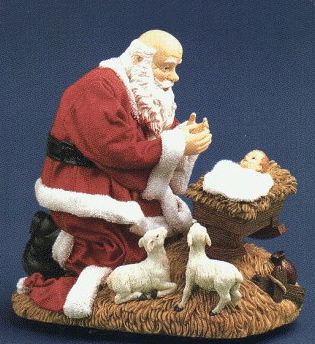The Papel Christmas tree arrived at the Vatican after a journey beset with more problems than the Exodus. The 106-foot, 9-ton fir tree from Southern Italy was put on Earth expressly so the Pope’s henchman could cut it down, haul it via helicopter to St. Peter’s Square, and adorn it as a simulacrum for the Heavenly creator with whom Pope Benedict XVI enjoys a direct dialogue. (Vatican janitors, however, are already complaining about the pine needles.)
I was surprised that the Pope demands the same earthly extravagances as shopping malls and downtown commercial districts, which use over-sized trees with a vast void under its branches to festively and subliminally remind us to engage in out-of-control consumer spending. It’s a startling blend of “religious” and “secular,” like a praying Santa figurine stuck in a nativity scene (presumably to present Baby Jesus with a TMX Elmo doll.)
Confusion over what’s holy and what’s heathen is growing increasingly divisive, as symbolized by the annual debate over “Christmas” vs. “Holiday” trees. Invariably, someone contends that the public display of trees endorses Christianity and belittles the existence of all other faiths, which forces Christians to galvanize in the “war against Christmas” by asserting their right as Christians living in one nation under God to do whatever they want, including worship their beloved tree.
But there are no Christmas trees in the Bible; the decorating of a tree was a pagan tradition, co-opted by early Christians who arbitrarily associated it with their most holy holiday. And now the Christmas tree is reverting to its pagan roots becoming an icon of our intolerance, proclivity for environmental destruction, and, above all, our insatiable greed. (Having thoroughly established the link between Christmas trees and Satan, I can safely get one without feeling bourgeois, or, even worse, Christian.)

